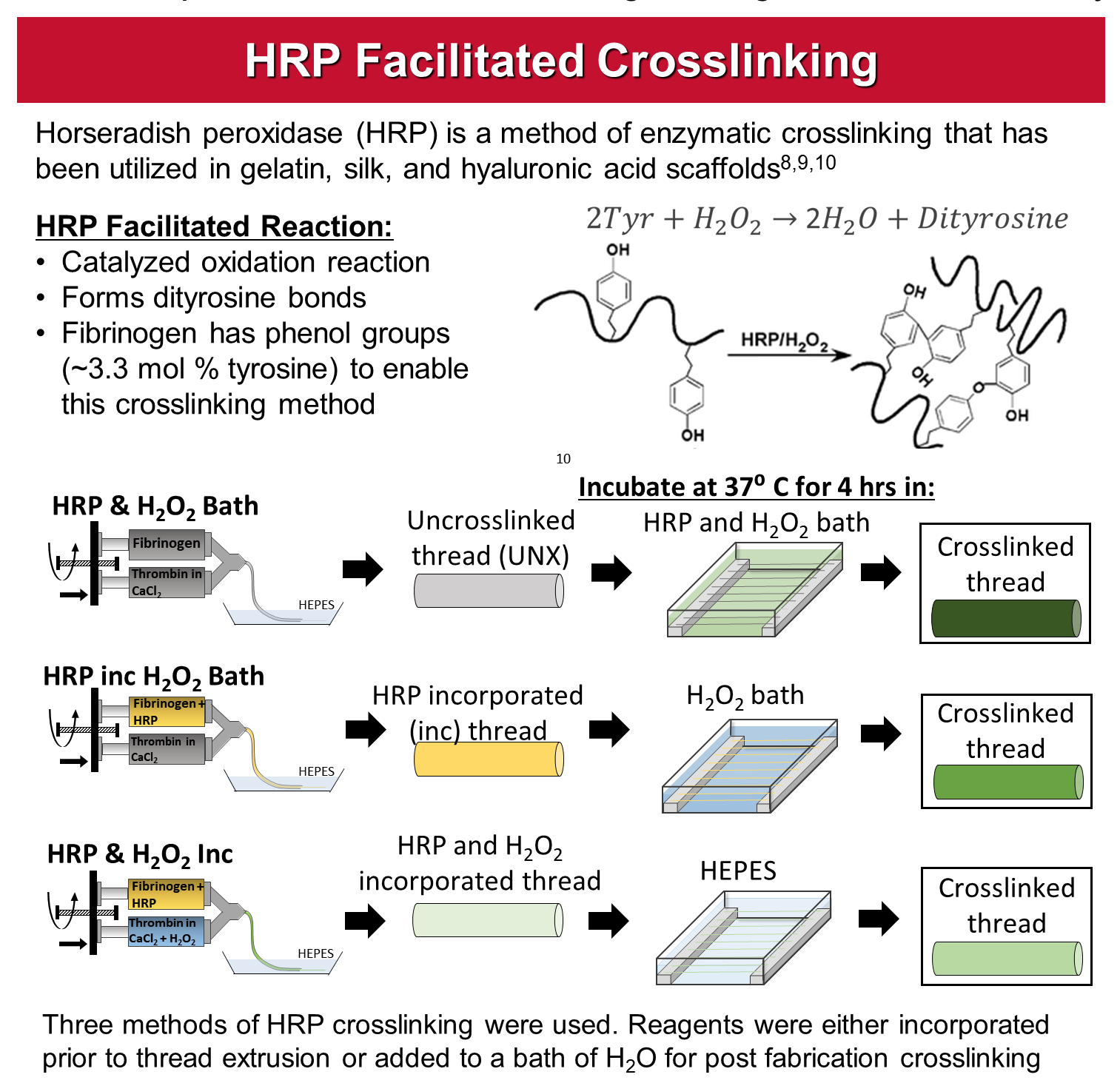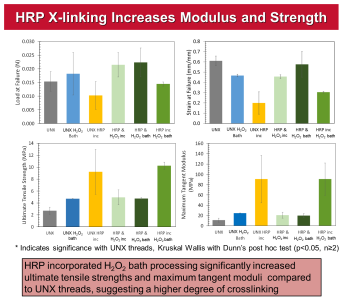Method of enzymatic crosslinking of fibrin microthread scaffolds for tissue engineering and regenerative medicine
In the fields of tissue engineering and regenerative medicine, robust temporary frameworks or “scaffolds” are often required to facilitate cell growth and support intercellular processes. Fibrin microthreads are a platform technology for construction of these scaffolds. As such, novel processes for the production of fibrin microthreads could have major implications for their use in tissue regeneration and wound healing. Furthermore, the ability to precisely tune the mechanics and degradation rate of fibrin microthreads during their production could make them suitable for more numerous medical and pharmaceutical applications.
Horseradish Peroxidase (HRP) crosslinked fibrin microthreads could be used to develop bundled, braided, aligned sheet, or composite-based tissue engineering scaffolds. Additionally, HRP mediated crosslinking of fibrin  microthreads may also be used for controlled release of agents such as growth factors, therapeutics, small molecules, and chemotherapeutics. The tuned mechanics achieved through this crosslinking method could be applied to mechanobiology, stem cell differentiation, anti-scarring, and angiogenesis-based systems. Additionally, HRP mediated crosslinking will allow for tuned degradation of fibrin microthread scaffolds, which can be used to tune biophysical control of functional tissue regeneration.
microthreads may also be used for controlled release of agents such as growth factors, therapeutics, small molecules, and chemotherapeutics. The tuned mechanics achieved through this crosslinking method could be applied to mechanobiology, stem cell differentiation, anti-scarring, and angiogenesis-based systems. Additionally, HRP mediated crosslinking will allow for tuned degradation of fibrin microthread scaffolds, which can be used to tune biophysical control of functional tissue regeneration.
Compared to alternative materials, fibrin microthreads are an ideal scaffold for treating muscle injuries specifically, because they can be bundled to mimic the aligned structure of muscle and aid in myoblast alignment. Moreover, being a natural material, fibrin outperforms its synthetic counterparts in regard to wound healing. While other approaches for producing fibrin microthread scaffolds do exist, these techniques have been unable to produce fibrin microthreads with desired mechanical properties, degradation rates and cell viability. Our work takes advantage of the concerted use of several HRP crosslinking methods to successfully exert control over mechanical properties and degradation rate of the scaffold.

Key Features/Benefits
The proposed methods of HRP crosslinking yield varying microthread swelling ratios and tensile mechanical properties, such as ultimate tensile strength and maximum tangent modulus. Through the strategic choice of HRP crosslinking method, mechanical properties of the fibrin microthread can be tuned to reflect desired mechanical properties, degradation rate, etc.